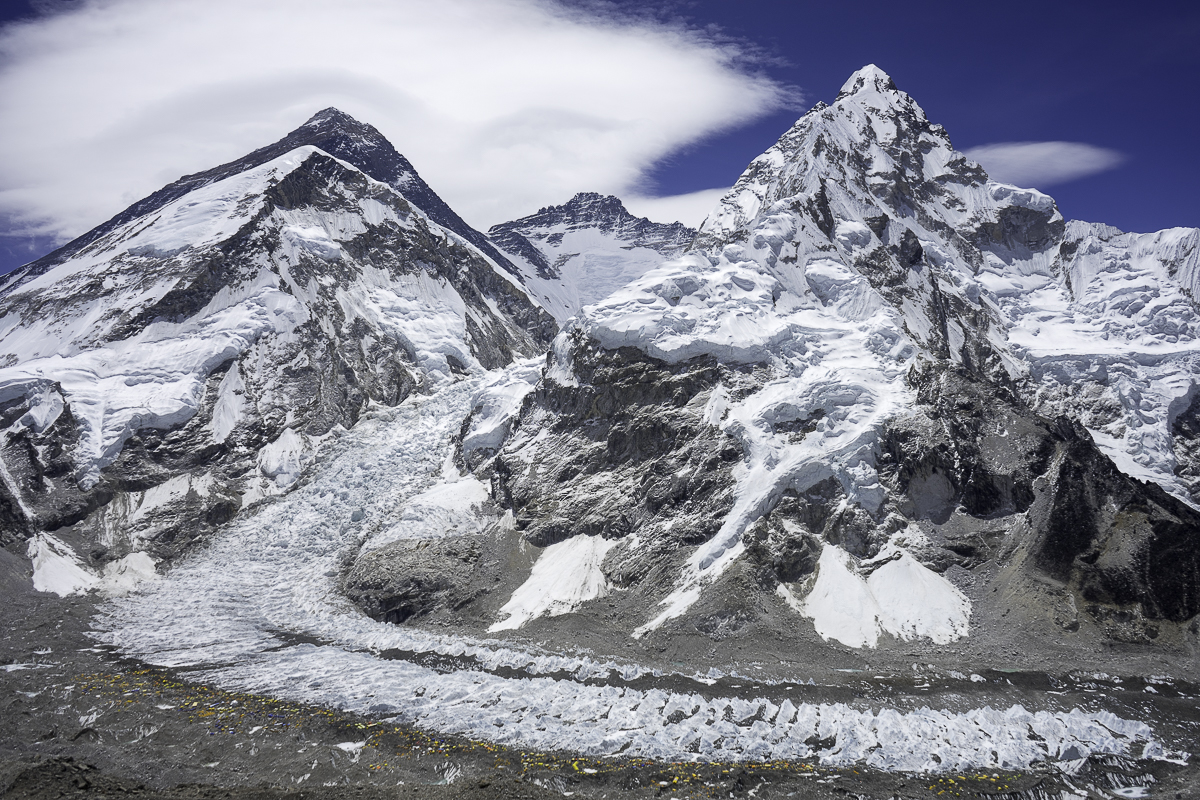The trek to Everest base camp is a comprehensive and colourful journey through Nepal’s most famous valley, the Khumbu, the home of Everest (8848m) and Lhotse (8501m).
The trail offers glimpses of Everest and Lhotse as well as other 8000m giants, Cho Oyu (8201m), Makalu (8463m) and Shisapangma (8013m).
Sherpa People – The inhabitants of Khumbu Region
Inhabiting this harsh land are the Sherpa people, an ethnic group famous for their hardiness, spirit and mountaineering prowess.
This trek journeys into the heartland of the Sherpa people providing an insight into their rich Buddhist culture and traditional way of life.
Sir Edmund Hillary grew a passion for Sherpas from his early mountaineering years and following Everest, spent his remaining years dedicated to fundraising and bringing development to the region.
Everest Base Camp Trek Season
Spring also brings climbers from around the globe with Everest ambitions. You’ll share the trail with yaks and porters carrying supplies to Everest base camp.
During Spring, the valley is awash with flowering rhododendron trees of various colors and large white magnolia trees. The rolling landscape varies from lush low alpine vegetation to dry high altitude scrub land.
During this season, Himalayan Ascent can offer you accommodation at an Everest Expedition camp.
This unique opportunity gives a chance to mix with excited and anxious climbers, and gives close up views of the infamous Khumbu ice fall. Alternatively in autumn, you can visit Ama dablam base camp or rest an extra day soaking in the views.
Everest Base Camp Trek Route
Our Route begins from the gateway airport town of Lukla at 2840m. Following the Dudh kosi river on the valley floor, the trail first passes through farming villages of mixed Tamang, Rai and Sherpa communities.
We then make a sharp ascent up to Namche, the capital of the Khumbu and the traditional trading centre of Sherpa people.
We take a less traveled road to Phortse, a typical Sherpa farming village and the site of the Alex Lowe Charitable Foundation’s Khumbu Climbing School.
Many Sherpa climbers come from Phortse and have been trained at the Khumbu Climbing School.
From here it’s a short trek to Pangboche, the highest permanent Sherpa settlement. We acclimatize in Dingboche first before trekking the last few kilometres of a high altitude trail to Everest base camp.
Kala Patthar – The highest point of Everest Base Camp Trekking
The view of Everest and Lhotse from Kala Pattar, our highest point, is a magnificent reward! The return route passes through Tengboche and the Tengboche monastery. This is the largest monastery in the region and is open to visitors to share prayer time with monks.


